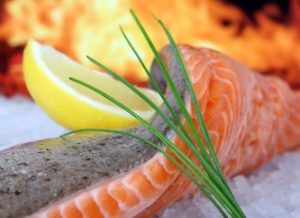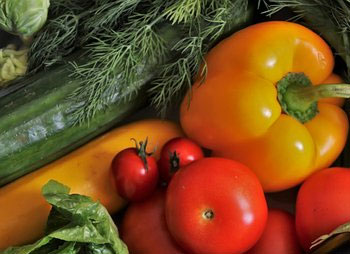Five Essential Guidelines for Senior Nutrition
This is one of those “deal with it” moments. As we age, our bodies and nutritional needs change, deal with it. As a result, nutrition for older folks (those over 50) becomes even more important than nutritional needs for the younger folks out there. And there are more older folks in America than at any other time in our history, as all the baby boomers are now over 50 and almost 90 million of them are over 60. Chances are, either you fall into that “senior” category or someone close to you does. Since that’s the case, let us delve into the subject that is nutrition for seniors.
It’s probably important to understand how nutritional needs change as people age. It really comes down to just a few, vital, things: our metabolism (the rate we burn calories) slows down, we lose muscle mass, our bone density decreases, and we lose the ability to effectively absorb key nutrients such as vitamins B12, B6, and folic acid. Oh yeah, most elderly individuals also become less active, whether by choice or necessity. As a result of all the above, senior diets need to provide the same amount of nutrients while consuming fewer calories. How to accomplish this? Just keep reading, that’s how…
 Eat nutrient rich foods. Since seniors require fewer calories to maintain their ideal weight, they don’t have the (tummy) space to gorge on empty calories. When seniors do eat, they need to make the most of it by eating foods packed with the nutrients they need. Want examples? Here you go: salmon, kale (yeah, I know, it sucks), spinach, shellfish (especially clams, oysters and scallops), liver (Ewwwwww!), blueberries, and the lowly potato (or, “potatoe” if you’re Dan Qualye) just to name a few.
Eat nutrient rich foods. Since seniors require fewer calories to maintain their ideal weight, they don’t have the (tummy) space to gorge on empty calories. When seniors do eat, they need to make the most of it by eating foods packed with the nutrients they need. Want examples? Here you go: salmon, kale (yeah, I know, it sucks), spinach, shellfish (especially clams, oysters and scallops), liver (Ewwwwww!), blueberries, and the lowly potato (or, “potatoe” if you’re Dan Qualye) just to name a few.- Get your protein, calcium, and vitamin D. Why? Because as I mentioned above, we lose bone density and muscle mass as we age. The calcium and vitamin D help with the bone density issue and the protein with the loss of muscle mass. For the vitamin D and calcium, dairy is your answer, but of the low-fat variety…skim or 1% milk, low-fat yogurt, cheese, or fortified orange juice. Sources of healthy protein include salmon, mackerel, chicken, nuts, and beans.
- Get your B6, B12, and folic acid. Vitamin B12 helps promote healthy nerve and blood cells as well as stave off anemia. As for vitamin B6, it assists with cognitive development and supports the immune system while folic acid supports kidney and bowel health and prevents low folate levels within the blood which can lead to anemia. However, as we age our bodies struggle to absorb the natural form of these nutrients. Therefore, foods that are fortified with B12, B6, and folic acid are best for a senior’s nutrition. Many cereals and other whole grains are fortified with these nutrients.
 Eat colors. In the form of fruits and vegetables, especially yellows, oranges, dark greens, and blues. Fruits and veggies of these colors are packed with antioxidants among other essential vitamins and minerals. Have some fun with this one…wander around one of ginormous grocery stores and see how many different orange, blue, yellow and dark green fruits and veggies you can find and, better yet, which ones you enjoy.
Eat colors. In the form of fruits and vegetables, especially yellows, oranges, dark greens, and blues. Fruits and veggies of these colors are packed with antioxidants among other essential vitamins and minerals. Have some fun with this one…wander around one of ginormous grocery stores and see how many different orange, blue, yellow and dark green fruits and veggies you can find and, better yet, which ones you enjoy.- Stay hydrated. It’s recommended that we all do this, but many seniors overlook the fact that they should drink 9-12 cups of non-caffeinated, non-alcoholic, low-sugar fluids each and every day. This helps maintain just about every function in the body, to include the brain, heart, and muscles. Fluids carry nutrients to your cells, remove bacteria from your bladder and prevent constipation. Drink up!
Nutrition for the elderly is serious business and you should ensure you and the seniors in your life treat it as such. The above five guidelines (rules, perhaps?) are just the start. You can learn more here:
https://www.nutrition.gov/subject/life-stages/seniors
You must be logged in to post a comment.